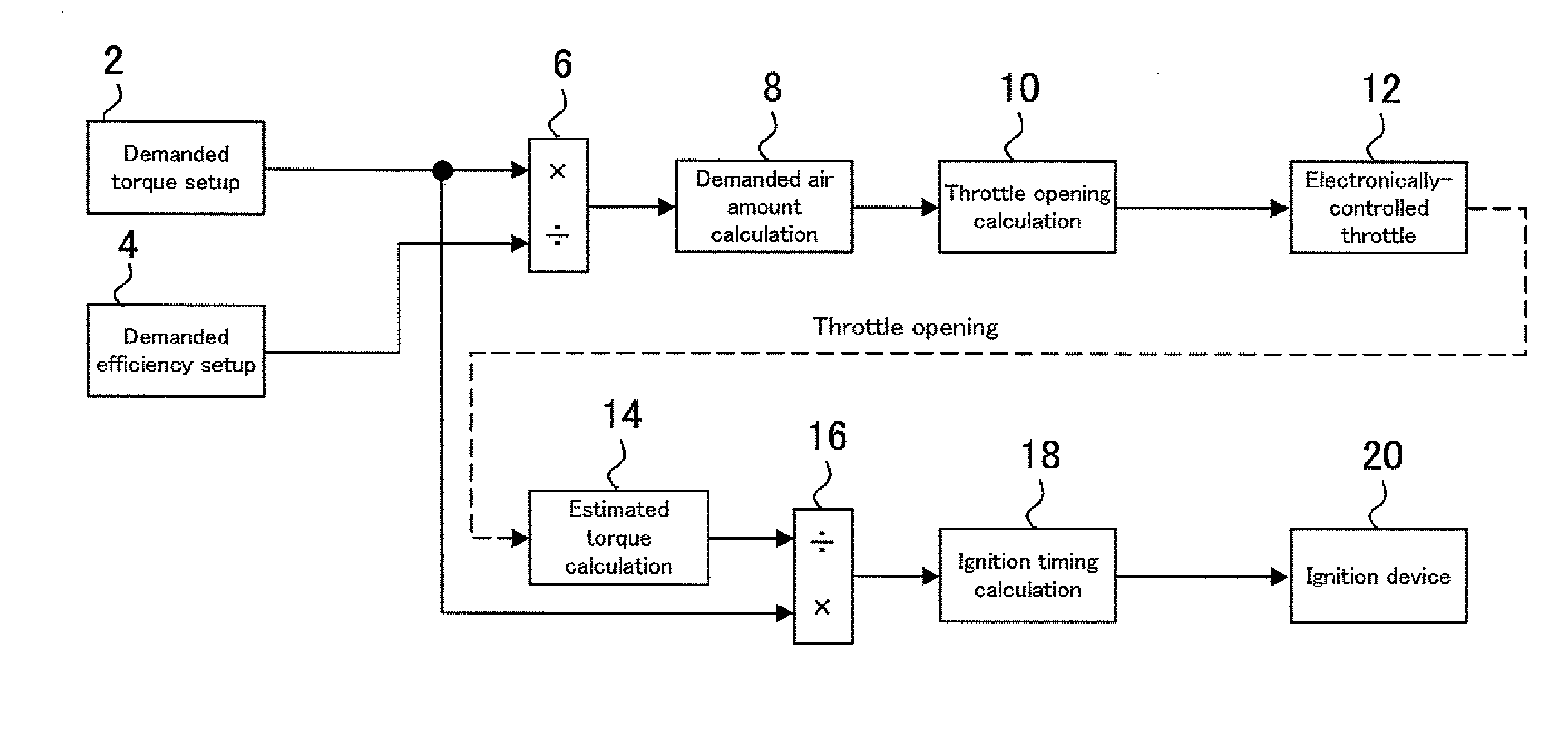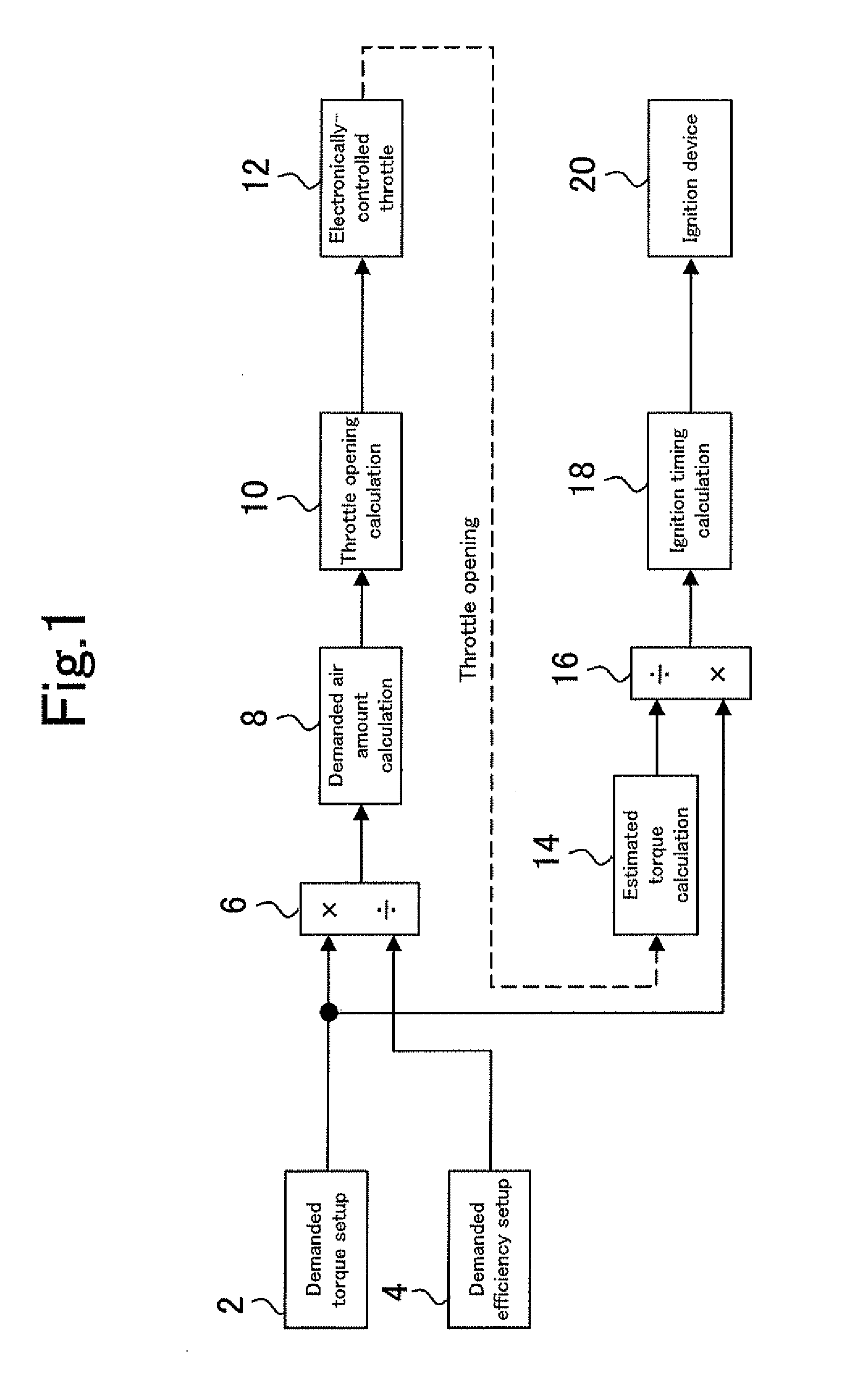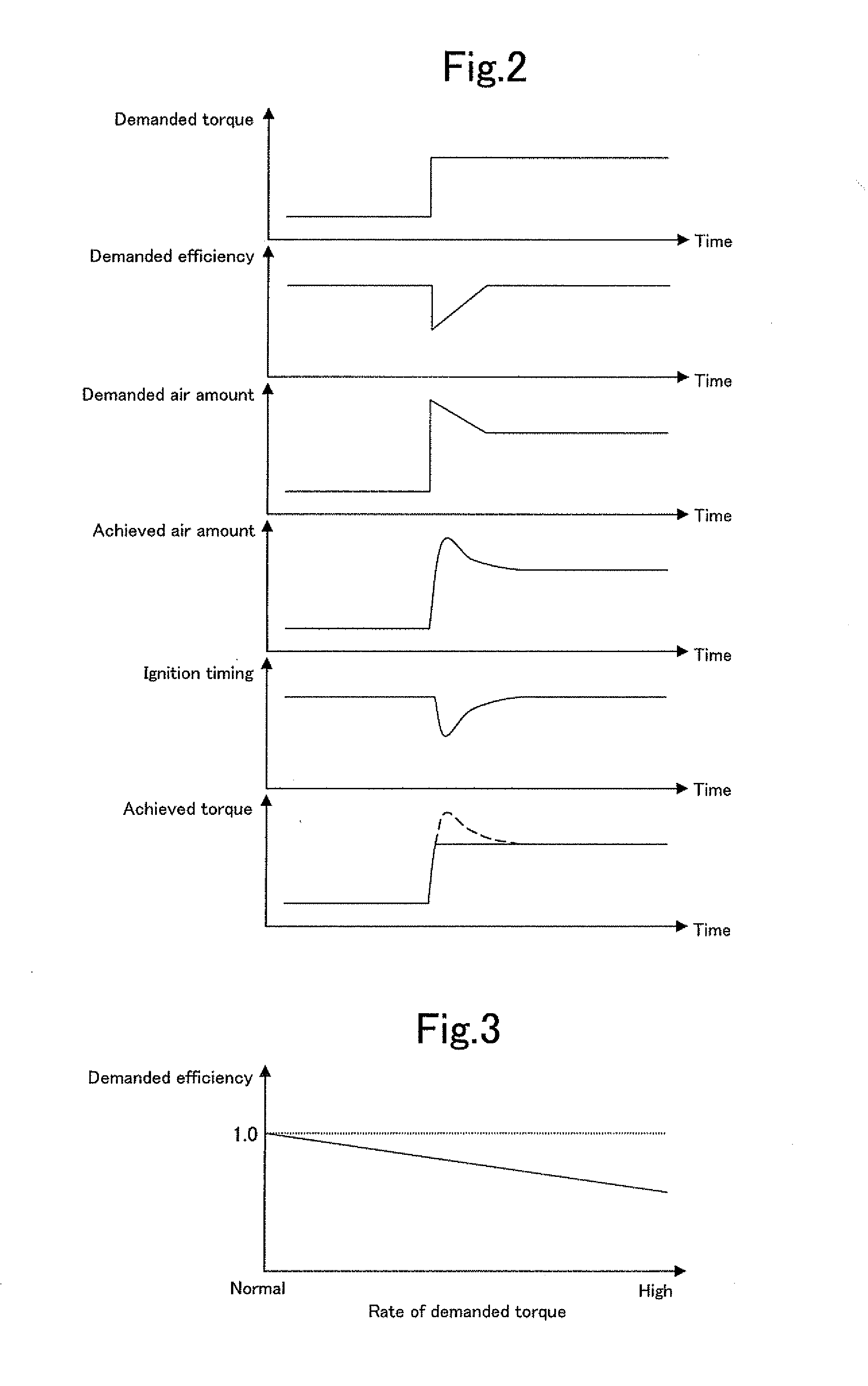Control device for internal combustion engine
a control device and internal combustion engine technology, applied in the direction of electric control, ignition automatic control, instruments, etc., can solve the problems of reducing the efficiency setting the increase of the demanded torque setting and the temporary decrease of the demand torque setting, etc., to increase the torque quickly, reduce the demand efficiency, and increase the operation in an overshoot manner
- Summary
- Abstract
- Description
- Claims
- Application Information
AI Technical Summary
Benefits of technology
Problems solved by technology
Method used
Image
Examples
first embodiment
[0033]A first embodiment of the present invention will now be described with reference to FIGS. 1 and 2.
[0034]FIG. 1 is a block diagram illustrating the configuration of an internal combustion engine control device according to the first embodiment of the present invention. The control device according to the present embodiment is a control device for use with a spark-ignition internal combustion engine. The control device according to the present embodiment controls the torque of an internal combustion engine by operating an ignition device 20 and an electronically-controlled throttle (hereinafter simply referred to as the throttle) 12, which serves as an intake actuator.
[0035]The control device according to the present embodiment includes a demanded torque setup section 2, which sets a demanded torque value for the internal combustion engine. The demanded torque setup section 2 sets a demanded torque in consideration of not only a torque demand from a driver, which is calculated f...
second embodiment
[0056]A second embodiment of the present invention will now be described with reference to FIG. 3.
[0057]The overall configuration of the control device according to the second embodiment is illustrated in the same block diagram of FIG. 1 as for the first embodiment. The control device according to the second embodiment differs from that according to the first embodiment in the function of the “means for correcting the demanded efficiency,” which is included in the demanded efficiency setup section 4.
[0058]When the demanded torque setting is rapidly increased, the demanded efficiency setup section 4 according to the second embodiment also temporarily decreases the demanded efficiency setting below the last setting at the timing when the demanded torque setting is rapidly increased. However, the second embodiment differs from the first embodiment in the setup of an amount by which the demanded efficiency setting is temporarily decreased. The second embodiment determines the amount of ...
third embodiment
[0062]A third embodiment of the present invention will now be described with reference to FIG. 4.
[0063]FIG. 4 is a block diagram illustrating the configuration of an internal combustion engine control device according to the third embodiment of the present invention. Elements that are shown in FIG. 4 and identical with those of the control device according to the first embodiment shown in FIG. 1 are assigned the same reference numerals as their counterparts. As is obvious from comparison between FIGS. 1 and 4, the control device according to the third embodiment differs from the control device according to the first embodiment in that the demanded torque and demanded efficiency are supplied from the outside of the control device. The third embodiment assumes that the demanded torque and demanded efficiency are supplied from a power train manager (hereinafter referred to as the PTM) (not shown), which provides integrated control over the entire drive system of the vehicle. The contro...
PUM
 Login to View More
Login to View More Abstract
Description
Claims
Application Information
 Login to View More
Login to View More - R&D
- Intellectual Property
- Life Sciences
- Materials
- Tech Scout
- Unparalleled Data Quality
- Higher Quality Content
- 60% Fewer Hallucinations
Browse by: Latest US Patents, China's latest patents, Technical Efficacy Thesaurus, Application Domain, Technology Topic, Popular Technical Reports.
© 2025 PatSnap. All rights reserved.Legal|Privacy policy|Modern Slavery Act Transparency Statement|Sitemap|About US| Contact US: help@patsnap.com



